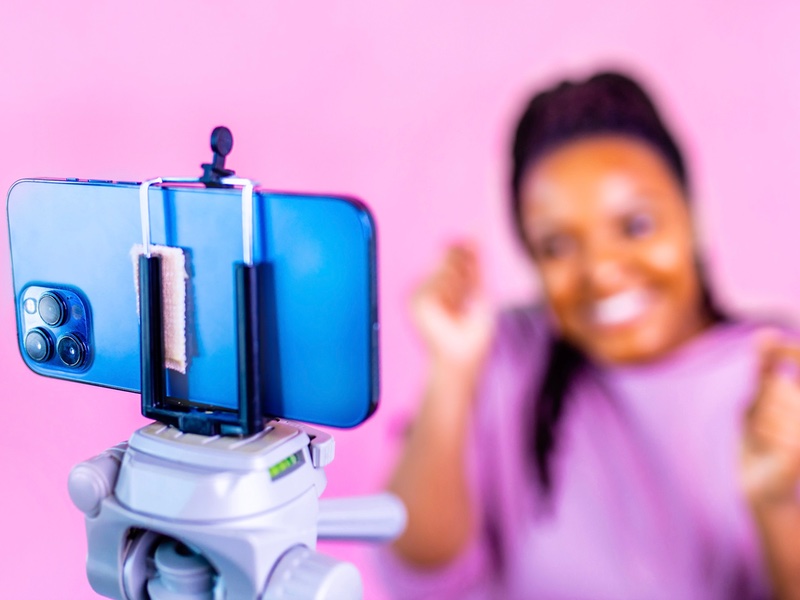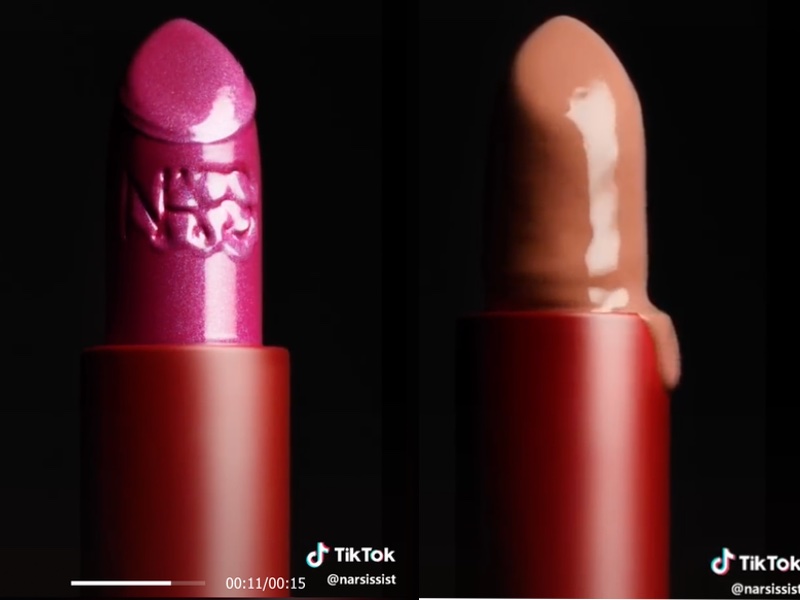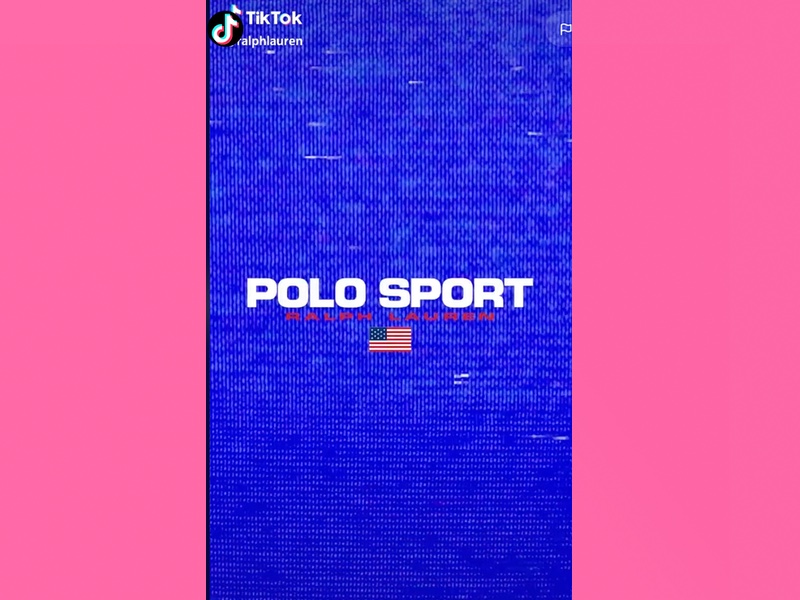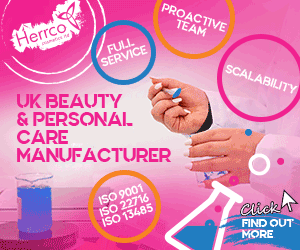TikTok is a daily source of skin care, hair, make-up and nail inspiration, with viral trends dropping on a weekly-to-monthly basis. The #beauty hashtag has 124.9billion views alone.
And it shows no signs of slowing down. This year, we have seen the likes of ‘slugging’ – slathering a sealing agent onto the skin to lock in moisture – flooding our feeds.
‘Skin cycling’ – a rotational four-night routine which includes two nights of treatments followed by two nights of recovery – has been equally popular.
Meanwhile, pop culture-based trends such as #EuphoriaHigh and #EuphoriaEye – which encourages users to pay homage to the high school drama by celebrating its characters' bold looks – only shows how culturally relevant the platform has become.
Staying on top of the next big thing
With the amount of beauty trends that launch on the platform, and with how quickly some fade, is it worth brands and retailers trying to tap into them?
Many beauty products have found viral fame on TikTok this year, resulting in them selling out at retailers.
Make-up brand Maybelline's Sky High Mascara picked up more than 3.4 million 'likes' after influencer @ashleypjimenez’s reaction to the lash-lifting formula went viral.
Consumers' inability to get their hands on the product only made it more desirable.
Meanwhile, Olaplex's No.7 Bonding Oil is among many beauty products that have sold out thanks to the trend #ThingsTikTokMadeMeBuy.
Permele Doyle, Founder and President of global creative influencer marketing agency Billion Dollar Boy, thinks the environment is ripe for brands to be weighing in.
Having partnered with the likes of L'Oréal, Bobbi Brown, Coach, Shiseido Group and Mulberry on social media content and campaigns, she tells us why TikTok is the next big opportunity for brands and retailers – but only when trends are tapped into authentically.
Why is it important for brands and retailers to stay on top of beauty TikTok trends?
Beauty is the TikTok vertical that is best at setting trends – they are really visual and typically stick around for a while.
By being ‘trend’ reactive, companies not only have the chance to showcase their story but can join in the conversation.
By not taking part, it can sometimes hurt the brand’s reputation. A user can become disengaged if the brand does not deliver content on a trend that is perfect for them.
Historically, TikTok trends have been used to build awareness and engagement, but now they are starting to drive conversion, which is a dream goal.
Brands and retailers need to engage with the platform, spending time getting to know the algorithm and how it works.
How can you tell the difference between a trend and content for content’s sake?
A genuine trend is where the content is groundbreaking, showcases something new or is a fresh take on a pre-existing look or technique.
Genuine trends can also come from looking at what is happening in the world and tapping into that. For example, looking for cultural things that can be replicated on the platform.
A real trend will also have people wanting to engage with it immediately, especially established creators.
Hairtok – videos which demonstrate quirky hair techniques like creating heatless curls with dressing gown robe straps or long socks – has blown up on the platform recently.
This is because it is much more powerful seeing hair being processed in video form versus a static brand image, and this arena will continue to boom.

The #beauty hashtag on TikTok has 124.9billion views alone (Image: Shutterstock)
Is it worth trying to tap into a popular beauty trend?
Yes, but the trend has to be true to your brand. Do not just hop on a trend because it is something that is in pop culture at the time.
It is about understanding the cultural relevance and considering the trend’s life cycle. Does the message align with your brand values? Will it be long-term or short lived?
Luckily, a lot of the TikTok beauty trends have staying power. The hard part is finding these trends ahead of time or getting involved with them before they have peaked.
You can partner with agencies who can help you gauge this, or invest in an in-house team to gather insights on what is happening on the platform.
A great example of a company that created a great beauty TikTok trend is make-up brand e.l.f. Cosmetics. Its first alpha programme on the platform cemented its cultural relevance.
Its goal was to captivate Generation Z’s attention and achieve virality, so it collaborated with top creators to create looks in its with its #EyeLlipsFace challenge.
[Using three key elements – ‘eyes, lip and face’ which is what e.l.f. stands for – it activated a key brand pillar and went viral.]
I think a lot of companies have been trying to replicate that since.
How can brands and retailers tap into a trend authentically?
Doing your own version of a popular piece of content – whether it is a look, hack or challenge – is a KPI that is unique to TikTok, and it works well.
Creating something original that people can watch and do themselves tends to build the strongest form of engagement on the platform.
Creators are at the heart of TikTok, so collaborate with the right people who know the platform. If you support the creator then they can support your brand.
An example of a piece of branded content that did really well on TikTok is when NARS Cosmetics first launched its channel.
It did amazing branded lipstick assets with this autonomous sensory meridian response (ASMR)-like quality – which was a popular trend on the platform at the time.
[The brand used evocative audio alongside visuals of its lipsticks melting and dripping].
It felt platform-native which is why people engaged with it.

NARS Comsetics debut 'platform-native' posts on TikTok (@narscosmetics)
What are the no-no’s when creating content for a trend?
It can hurt a brand’s image jumping on the tail end of a popular trend in a bid to push a new launch or programme. My advice – skip it if the moment has nearly passed.
Not having a strong content strategy behind what you are doing, or not having a regular cadence of posts supporting your take on the trend, can also be damaging.
Brands who do a campaign with creators but do not have their own profile filled with extra content on the trend have also struggled to drive any kind of connection.
It does not bode well either when brands jump on a trend using content that is not native to the platform – aka something highly-produced.
In the early days of TikTok, fashion house Ralph Lauren would load advertisements showcasing its latest line, which had clearly been used elsewhere, and it looked like they were trying too hard.

One of fashion house Ralph Lauren's first posts on its TikTok channel (@ralphlauren)
How important is audio on a TikTok beauty trend?
Audio can be a powerful asset when tapping into a trend, but unfortunately, the current audio library on TikTok is a big barrier.
If you want to link your content with a popular audio track on TikTok then you have to pay for that licence, and it is incredibly expensive.
As a result, some brands create their own audio but it can come across like an advert, usually backfiring on the brand.
The platform is working on expanding its audio library.
How do TikTok trends translate offline?
TikTok is not only picking up on cultural trends, it is now setting them, as well as starting to very gradually turn into a distribution channel.
For retailers, the ideal ‘offline’ end goal is people buying products, but it is still a big hope to have when creating content for the platform.
It is something you want but it shouldn't be your initial KPI.
To be considered a viral trend, you need a video that has more than a million views, so manage your expectations when putting out content.
However, if you go in with that goal, then you need to invest in it by paying to promote your content so more people see it.
This will get more eyeballs from your target audience on the video and it will increase the possibility for it to go viral online.
It can even trickle into real life if it resonates enough, but this is not super common yet.
Read more: check out the biggest TikTok beauty trends of 2022 so far.




